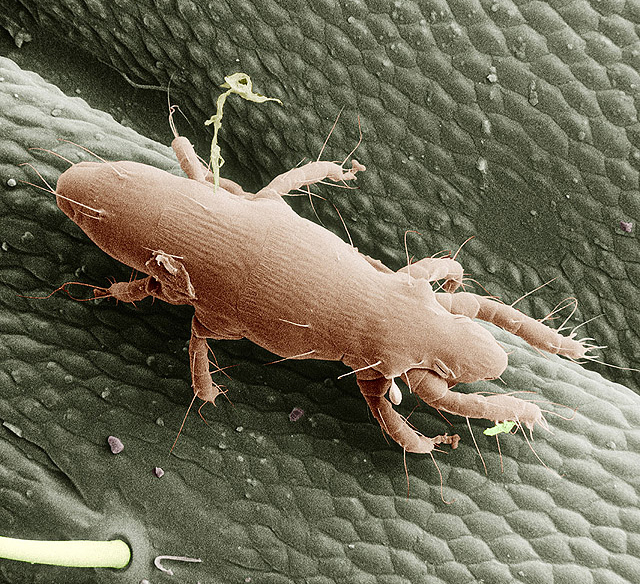Bee Mites : Acari : Acariformes : Trombidiformes : Pyemotidae : Pyemotes
Pyemotes tritici (Lagrèze-Fossat and Montané, 1851)
Acarus tritici Lagrèze-Fossat and Montané, 1851: 41.
Pediculoides tritici: Oudemans, 1936: 394
Pyemotes tritici: Oudemans, 1937: V; Cross & Moser, 1975: 724 (included in key; synonymized with Pyemotes boylei; Menezes at al., 2009: 630; Cross & Moser, 1971: 182 (included in key).
Pyemotes boylei Krczal, 1959: 150, Figs 1-2 (synonymized by Cross & Moser, 1975).
Hosts. Insects of various orders. In Brazil, the following managed stingless bee species were attacked (Menezes at al., 2009):
Tetragonisca angustula (Latreille, 1811)
Frieseomelitta varia (Lepeletier, 1836)
Melipona subnitida Ducke, 1911
Melipona asilvai Moure, 1971.
Eickwort (1988) suggested that records of P. venticosus attacking honeybees may refer to Pyemotes tritici, see Notes for Pyemotes venticosus.
Distribution. Cosmopolitan (Moser et al. 1987), including USA: Hawaii, Georgia, Louisiana, Kansas; Mexico: Sonora; Cuba (Cross & Moser, 1975); Brazil (Menezes at al., 2009); France (type locality), Iran (Kamali et al. 2001).
Biology. P. tritici, may produce severe skin lesions, asthma, or nausea in humans. It has also been shown to have great potential as a biological control agent for insect pests (Kethley, 1982). Its effectiveness as a parasitoid results from several characteristics (Bruce, 1989):
(1) high reproductive potential;
(2) short life-cycle (4-7 days);
(3) no intermediate hosts or food sources required-- all development occurs within the opisthosomal sac of the adult female and all offspring are born live as sexually mature adults;
(4) only females are parasitic and represent about 90-95% of the population;
(5) females mate immediately at birth and begin host-seeking activity;
(6) populations are easily reared and synchronized in the laboratory; and (7) they are cosmopolitan in distribution.
Control. Pyemotes tritici, was reported to kill four colonies of stingless bees Tetragonisca angustula and one colony of Frieseomelitta varia in Brazil. The infestation was terminated by isolating the dead colonies from the meliponary (Menezes at al., 2009).
References
Eickwort, G. C. 1990. Mites: An Overview. In Honey Bee Pests, Predators and Diseases, 2nd edition, eds. R. Morse & R. Nowogrodzki, 188-199. Ithaca: Cornell University Press.
Image Gallery
B. OConnor and P. Klimov ©
Created: April 30, 2012
Last modified: 

